For many years, the .380 ACP wasn’t a hugely popular cartridge for concealed carry or home defense, but times are changing.
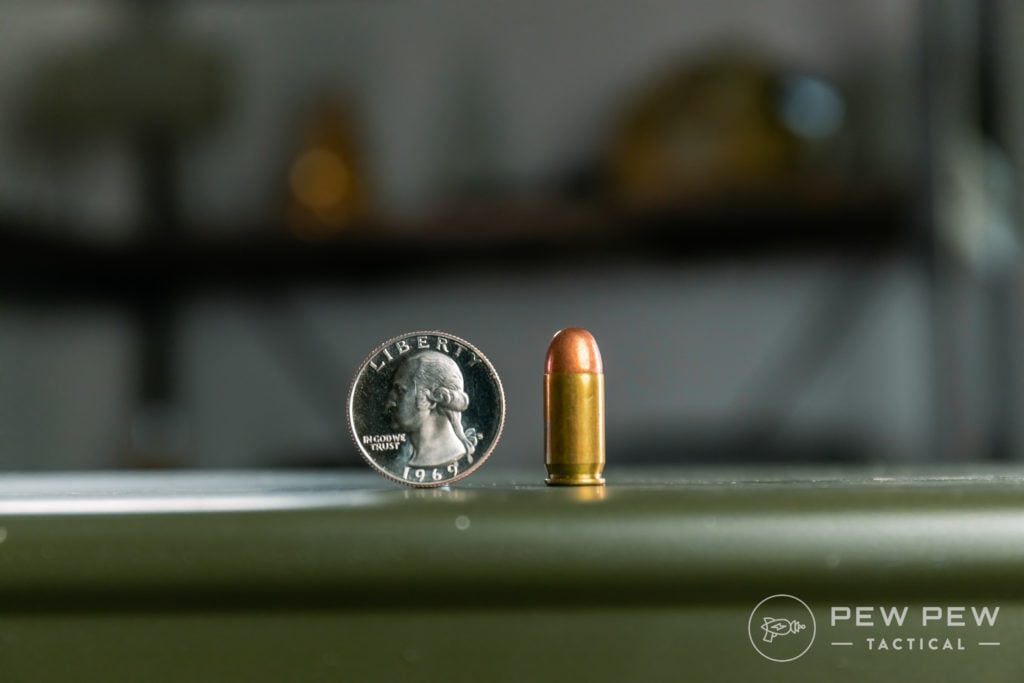
The problem with this is that with so many types of .380 ACP ammo on the market, how do you know which is the best defensive ammunition for you?
Let’s take a look at some of my favorite ammunition choices and break down the important facts of ammo selection.
THE QUICK LIST
-
Editor’s Pick Defense Ammo
-
Best Value Defense Ammo
-
Most Consistent Defensive Ammo
-
Most Affordable Defense Ammo
-
Editor’s Pick Range Ammo
-
Best Plinking .380 Ammo
-
Best Budget Target Ammo
Table of Contents
Loading…
Current In-Stock .380 Ammo
.380 ACP Ammo in Stock
Best .380 ACP Ammo for Self-Defense
While I won’t name one brand to rule them all, I can make some suggestions based on my personal research into an effective round for my Sig Sauer P238.
For reference, this weapon sports a 2.7-inch barrel.
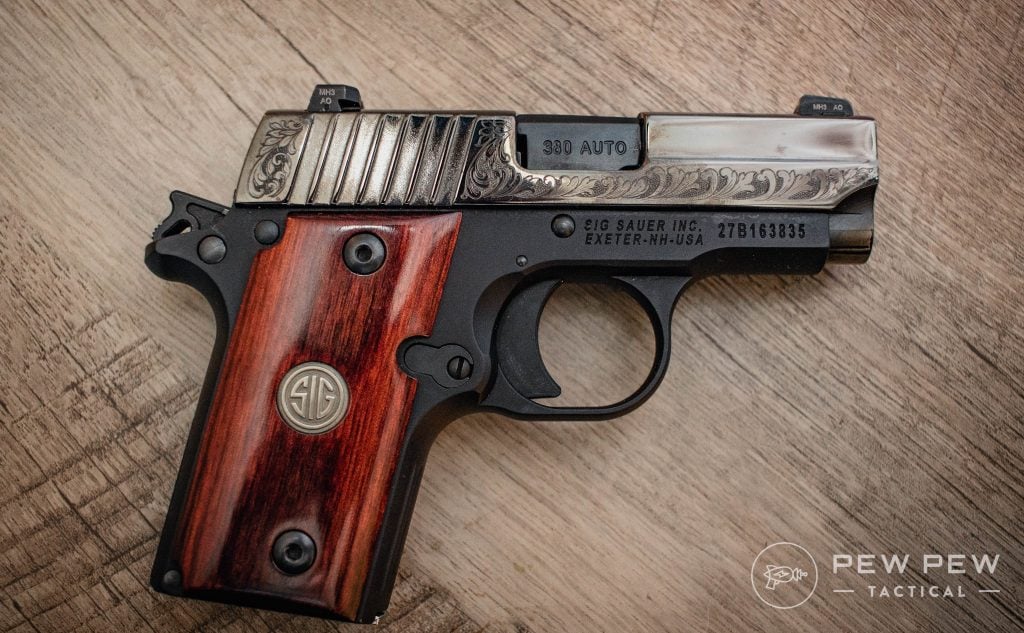
1. Hornady Critical Defense 90 Grain FTX – Editor’s Pick Defense Ammo
Prices accurate at time of writing
Prices accurate at time of writing
-
25% off all OAKLEY products - OAKLEY25
Copied! Visit Merchant
Pros
- Good penetration
- Reliable and wide expansion
- Comes in boxes of 25 instead of 20
Cons
- Can sometimes be difficult to find
Specs
- Bullet type: Polymer-tipped jacketed hollow point
- Casing: Nickel-plated brass
- Bullet weight: 90 gr
- Muzzle velocity: 1000 fps
Hornady’s Critical Defense line makes use of polymer Flex Tip (FTX) that aids in expansion while also preventing the round from expanding too early upon contact.
The result is a round that boasts a tested median penetration depth of 13.5 inches while still delivering nearly half-inch expansion.
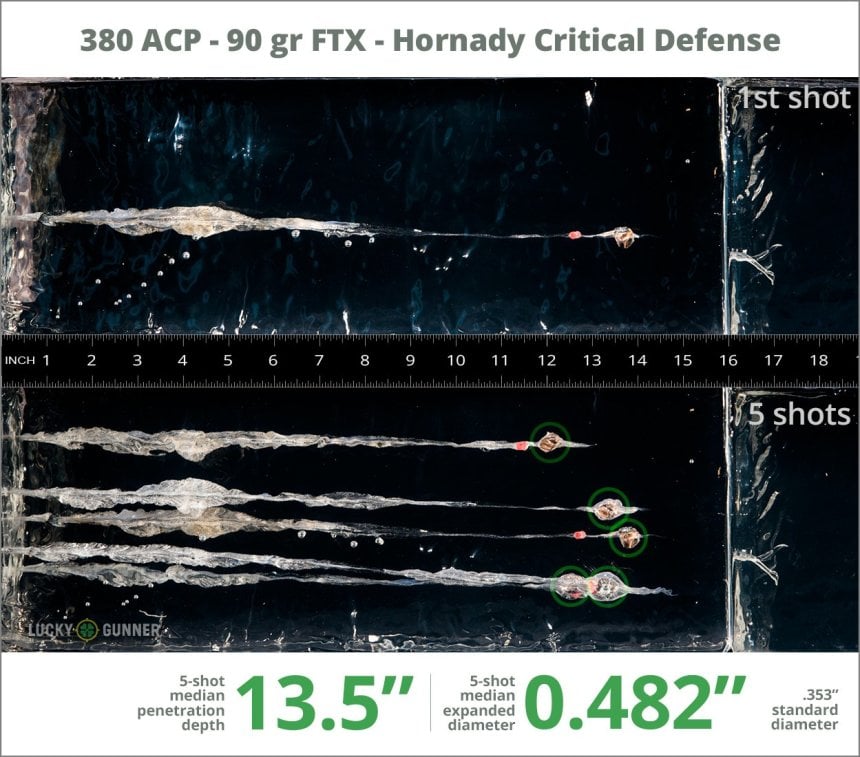
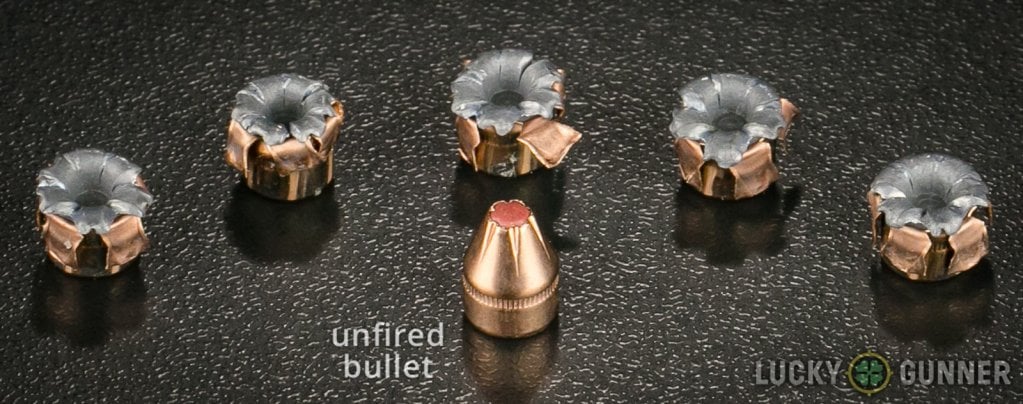
Couple that with the fact that Hornady packages their ammo in boxes of 25 instead of 20, and you have a round that performs extremely well while maintaining great bang for your buck.
What’s your take on Hornady’s defensive .380 round? Rate it below!
2. Sig Sauer 90 Grain V-Crown – Best Value Defense Ammo
Prices accurate at time of writing
Prices accurate at time of writing
-
25% off all OAKLEY products - OAKLEY25
Copied! Visit Merchant
Pros
- Affordable
- Excellent expansion
- Easy to find
Cons
- Penetration is right and the FBI minimum standards
Specs
- Bullet type: Jacketed hollow point
- Casing: Nickel-plated brass
- Bullet weight: 90 gr
- Muzzle velocity: 980 fps
Testing done by Chris Baker at Lucky Gunner has shown this round to be effective in both penetration and expansion.
It reaches right around the minimum 12-inch mark on average while also expanding to half an inch in size.

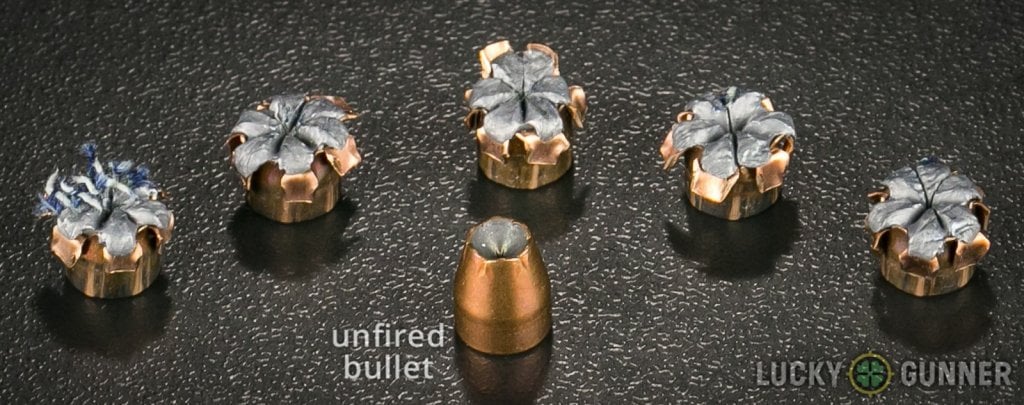
Sig’s V-Crown ammunition is well-built and surprisingly affordable.
3. Speer Gold Dot 90 Grain GDHP – Most Consistent Defensive Ammo
Prices accurate at time of writing
Prices accurate at time of writing
-
25% off all OAKLEY products - OAKLEY25
Copied! Visit Merchant
Pros
- Reliable expansion
- Wide expansion diameter
- Extremely consistent
Cons
- More expensive
- May be harder to find
Specs
- Bullet type: Jacketed hollow point
- Casing: Nickel-plated brass
- Bullet weight: 90 gr
- Muzzle velocity: 1040 fps
Speer’s Gold Dot line has been a mainstay in defensive ammo nationwide, regardless of caliber, for many years. Their 90gr Gold Dot offering is no exception.
While these rounds fall just short of the FBI minimum penetration depth, they exhibit uniform and reliable expansion, which is tough to get in .380 ACP.
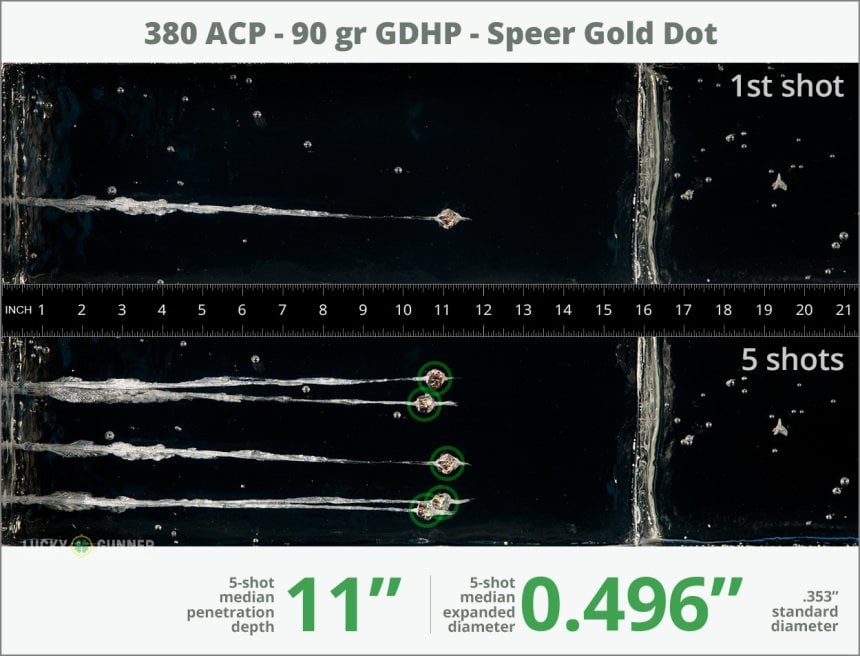
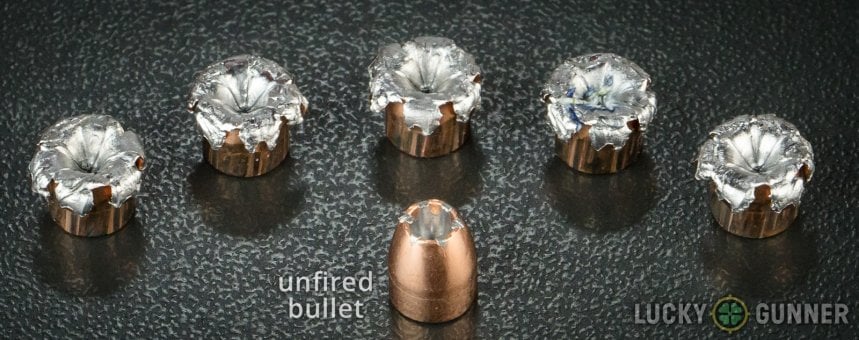
Also, keep in mind that these tests are conducted through 4 layers of clothing, which is on the extreme end of what would be expected.
4. Hornady American Gunner 90 Grain XTP – Most Affordable Defense Ammo
Prices accurate at time of writing
Prices accurate at time of writing
-
25% off all OAKLEY products - OAKLEY25
Copied! Visit Merchant
Pros
- Affordable
- Easy to find
- Good penetration
- Comes in boxes of 25 instead of 20
Cons
- Expansion can be hit or miss depending on certain conditions
Specs
- Bullet type: Jacketed hollow point
- Casing: Brass
- Bullet weight: 90 gr
- Muzzle velocity: 1000 fps
The Hornady American Gunner .380 ACP features the XTP projectile and penetrates well.
It offers controlled expansion to allow the round to expand gradually as it travels through the body.
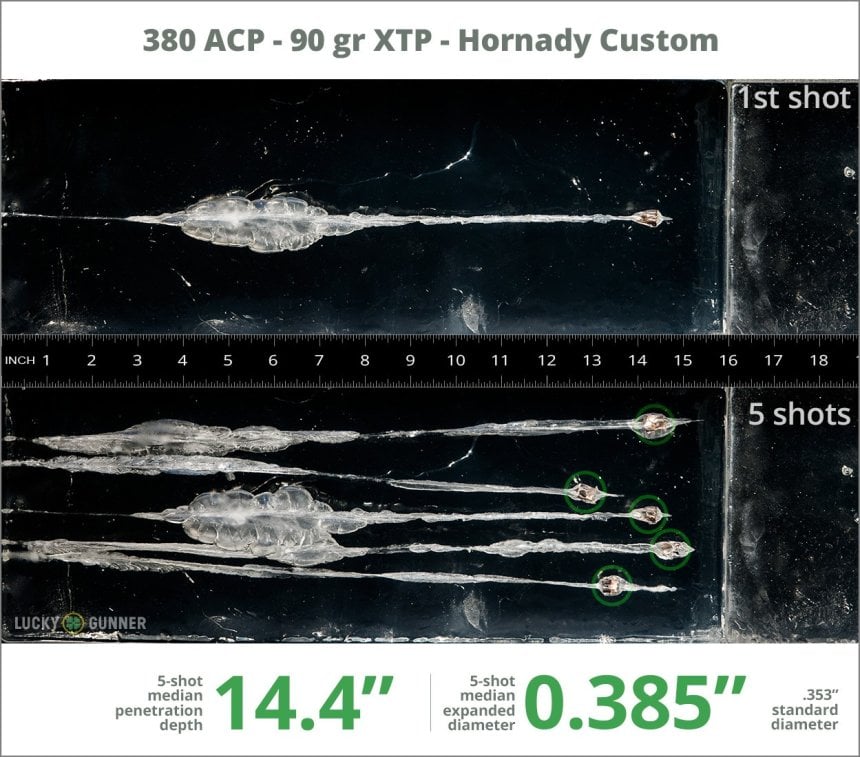
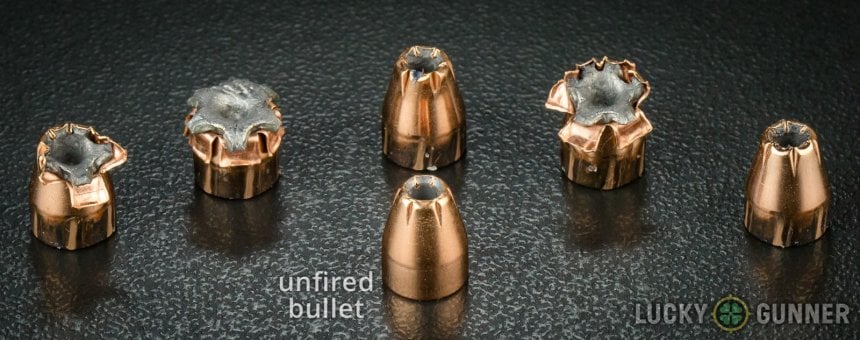
While it doesn’t sport 100% reliability on expansion like the Hornady Critical Defense FTX, it definitely stays within the FBI penetration depth standards.
The main draw here is that this ammo is extremely affordable and pretty common.
Best .380 Ammo for Target Practice & Plinking
5. Sellier & Bellot 92 Grain FMJ – Editor’s Pick Range Ammo
Prices accurate at time of writing
Prices accurate at time of writing
-
25% off all OAKLEY products - OAKLEY25
Copied! Visit Merchant
Pros
- Good accuracy
- Runs clean
- Compact packaging
- Reliable
Cons
- Slightly more expensive
Specs
- Bullet type: Full metal jacket
- Casing: Brass
- Bullet weight: 92 gr
- Muzzle velocity: 955 fps
Another favorite of the PPT team for range use is Sellier & Bellot.
In our experience, this ammo shoots pretty clean and has given us good accuracy.
Another small bonus is that Sellier & Bellot ammo packs their rounds in boxes smaller than many competitors, making packing your range bag and ammo storage a little bit easier.
6. Magtech 95 Grain FMJ – Best Plinking .380 Ammo
Prices accurate at time of writing
Prices accurate at time of writing
-
25% off all OAKLEY products - OAKLEY25
Copied! Visit Merchant
Pros
- Affordable
- Solid accuracy
- Reliable
Cons
- Not super clean, but not super dirty
Specs
- Bullet type: Full metal jacket
- Casing: Brass
- Bullet weight: 95 gr
- Muzzle velocity: 951 fps
Magtech makes a variety of ammo, all of which is known for solid performance-to-cost ratio. This FMJ ammo tends to be among the more accurate brands we shoot when it comes to general range plinking.
It is right in the middle on the clean-to-dirty scale, which means you shouldn’t run into any issues as long as the gun has a reasonable cleaning schedule.
7. Fiocchi 95 Grain FMJ – Easiest to Find
Prices accurate at time of writing
Prices accurate at time of writing
-
25% off all OAKLEY products - OAKLEY25
Copied! Visit Merchant
Pros
- Affordable
- Reliable
- Easy to find
Cons
- Runs dirty
Specs
- Bullet type: Full metal jacket
- Casing: Brass
- Bullet weight: 95 gr
- Muzzle velocity: 960 fps
I’ve never had a problem with Fiocchi; every round has gone bang as it should. However, it’s some of the dirtiest ammo I’ve used.
After 200 rounds of their 9mm, my slide starts to stick. After 300, I need to clean it if I want to keep things running smoothly.
It is still one of the main brands I use for range ammo.
8. PMC Bronze 90 Grain FMJ – Best Budget Target Ammo
Prices accurate at time of writing
Prices accurate at time of writing
-
25% off all OAKLEY products - OAKLEY25
Copied! Visit Merchant
Pros
- Readily available
- Affordable
- Reliable
Cons
- Average accuracy
Specs
- Bullet type: Full metal jacket
- Casing: Brass
- Bullet weight: 90 gr
- Muzzle velocity: 961 fps
If you are looking for reliable ammo that runs relatively clean, PMC Bronze is a great option.
In the current market, PMC ammo has been fairly available while remaining competitively priced.
This is great for those who are looking to plink with solid ammo at a solid price.
How To Choose The Best .380 Ammo
Testing Procedures for Self-Defense Ammo
The below pictures and data are from a super in-depth post from Lucky Gunner plus a few of our personal criteria. Here are some details of the test, which closely mimics FBI protocol:
- Shot 10 feet away
- 4 layers of fabric in front of the ballistics gel to simulate a “worst case” scenario of clothing
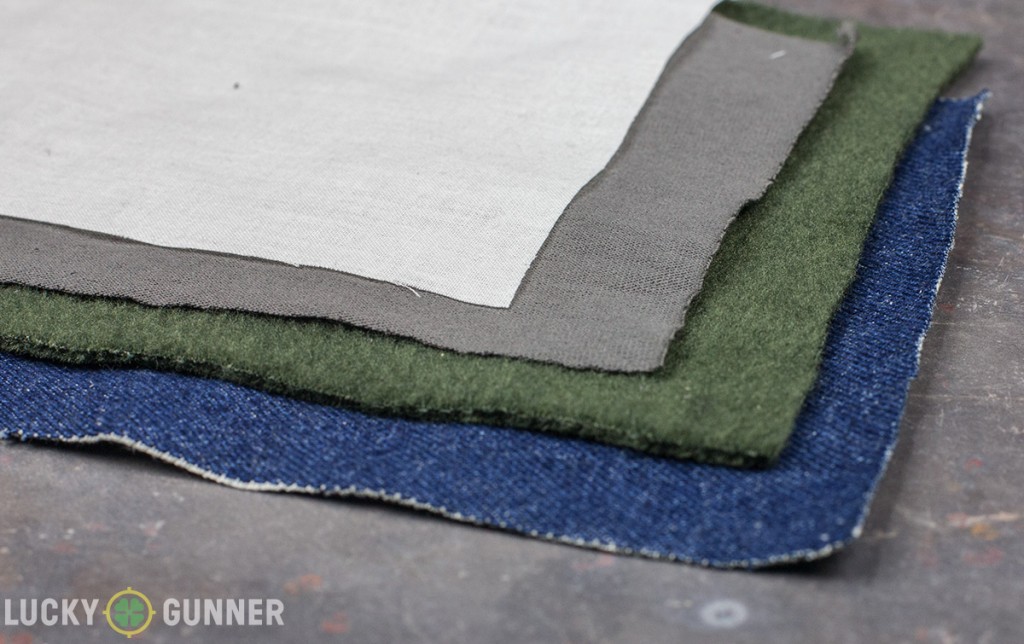
- Ideal penetration of 12-18 inches. More than 18 inches might go completely through the target and hit something beyond. While a 12-inch minimum protects against thicker targets and possibly hitting something like an arm first before the torso.
- 5 shots for more data
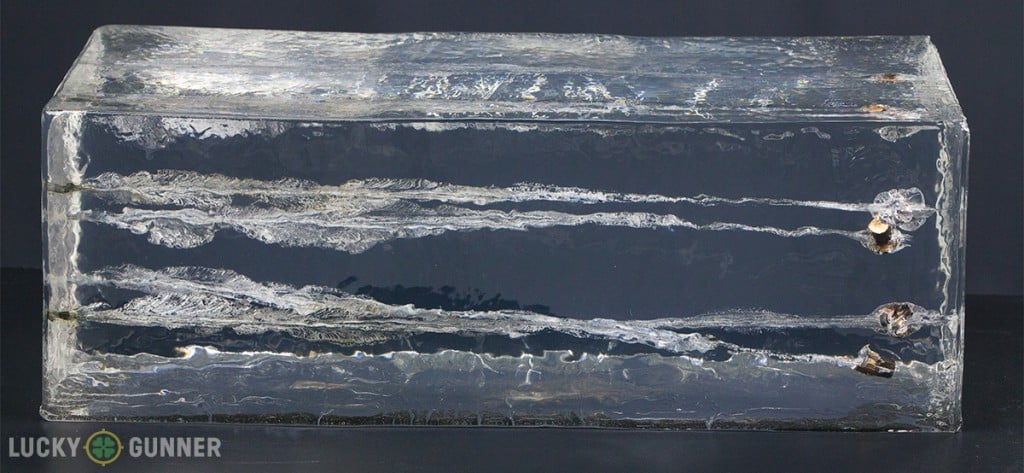
- Shorter barreled gun. Most tests are run with a full-size pistol, but Lucky Gunner used a Glock 42, which has a 3.25-inch barrel. Their thought was most people carrying a handgun most likely have a compact-sized one. So, for those of you with a longer barrel, the penetration and velocities might be slightly higher.
Self-defense is only one portion of this article, and our section on range ammo focuses more on the criteria of reliability, cost-effectiveness, and accuracy.
Final Thoughts
The .380 round is one some choose for self-defense or just for some fun on the range. Regardless of what you use it for, the right ammo will only help you reach your goals.
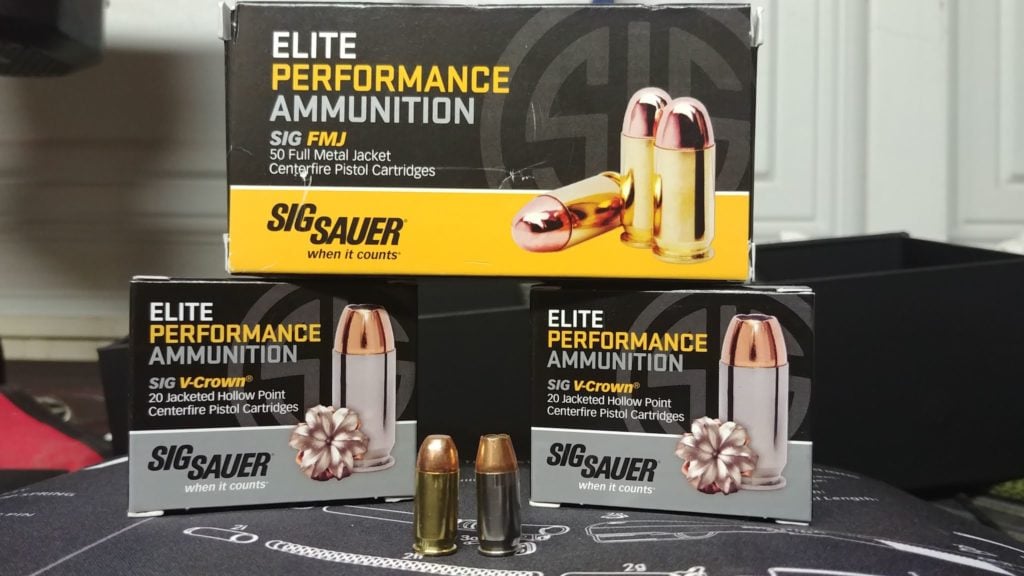
We’ve listed out some of our favorite .380 ammo brands to get you started and hopefully set you down the right path.
What’s your favorite .380 ammo brand? Tell us in the comments below. Don’t have one yet? Check out our article on the Best .380 Pistols: Pocket Rockets for some recommendations.
Latest Updates
- April 24, 2024: Updated the product categories as well as added supplemental information to each product.
- February 2, 2024: Updated list with new recommendations, added current California ammo ruling.

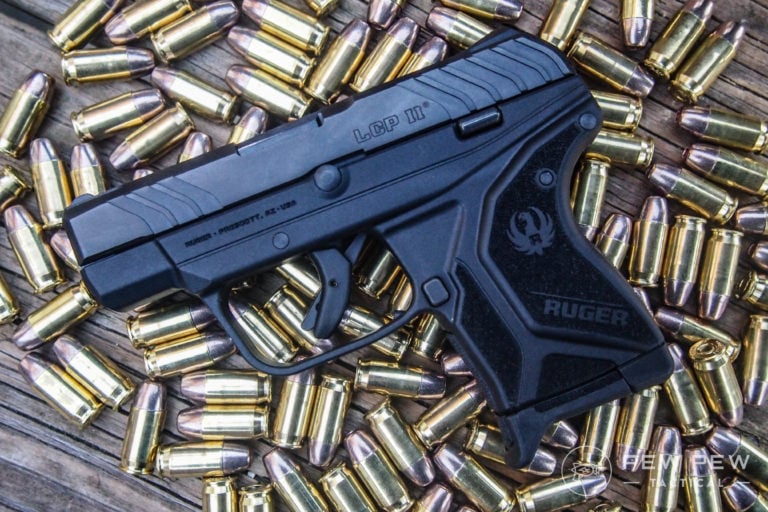
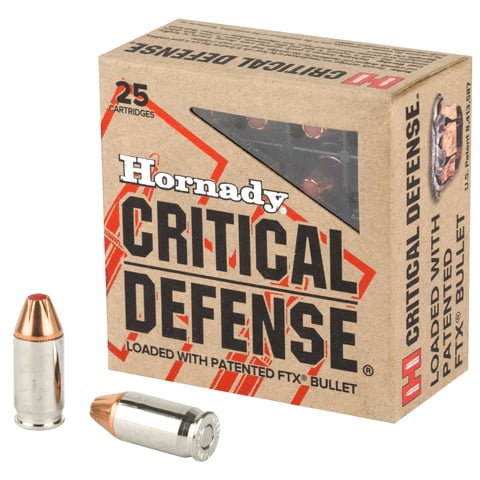
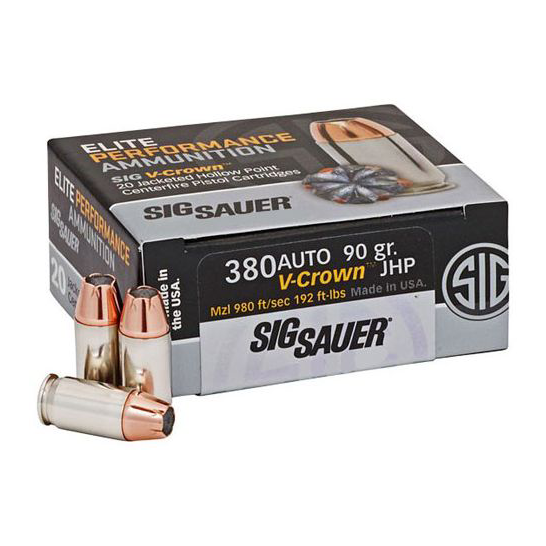

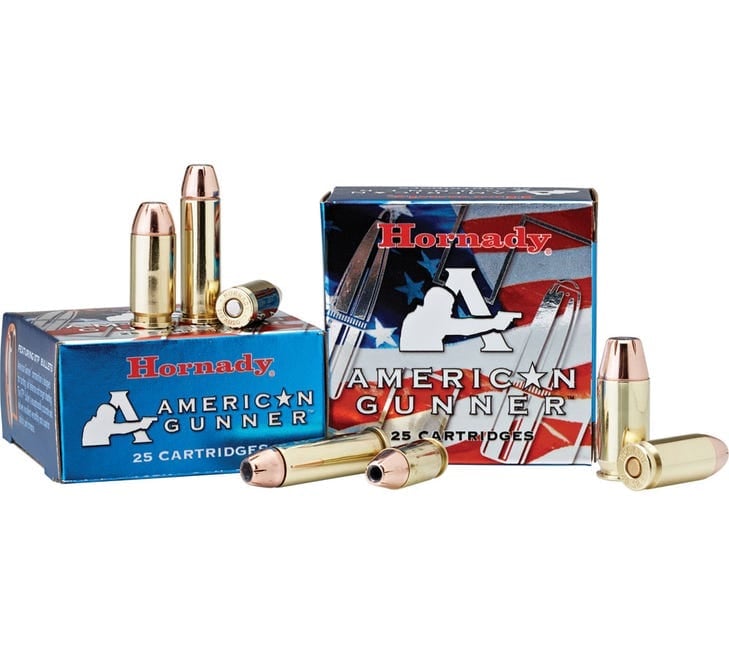
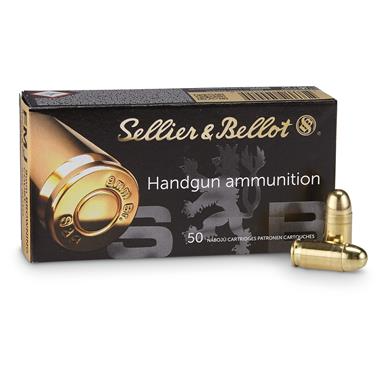

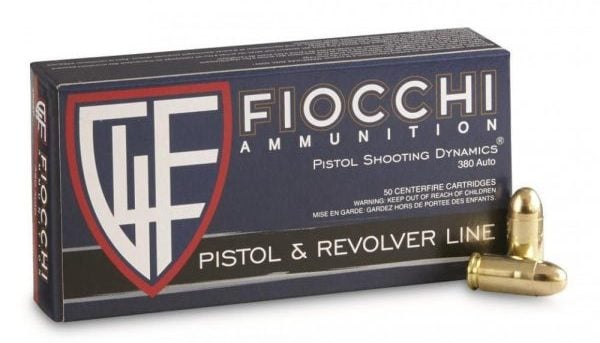
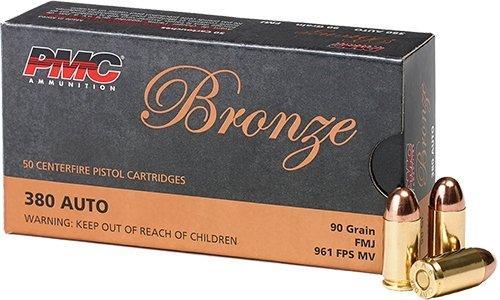
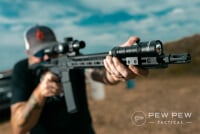






101 Leave a Reply
The new Federal Hydra-Shok DEEP ! Best penetration of all 380 JHP's and moderate expansion. Best overall 380 performance in many peoples opinion.
Love the Buffalo Bore 110g rounds for defense...
Wheres Norma monolithic hollow point? Performs well and burns clean.
great
Precision one is the only 380 ammo that meets both penetration and expansion minimum standards. Why is it not mentioned?
What about the Gorilla Silverback? Penetration without over penetration?
Have you seen the “shooting the bull” gel tests? Precision One 380 is the only round that meets the FVI protocol on both penetration and expansion. You didn’t mention it. Why?
My choice for Carry in my 380 is the WWB full metal jacket flat nose.
I abandoned HP bullets for .380 ACP after 12 years on Homicides Department. It´s not capable of penetration and expansion at same time in human tissue - not ballistic gelatin.
The other reason is that .380 ACP pistols are designed essentially for close range. To solve a stoppage when you are covered behind a pole, with a high capacity magazine and some distance from the opponent is one situation, but at breath distance the things are different. I feel more comfortable minimizing the stoppage chances with FMJ standard ammo.
I'm evaluating my new Glock 42 in .380. I was told by the gun dealer that this gun may be finicky with some ammunition. I found that WWB as a range ammo was 100% reliable without a hitch or a hiccup. The gun dealer recommended SIG Sauer Crown for a defense load. After going through several boxes, I found it to be COMPLETELY unreliable. About 90% of the time it stove piped even if it was loaded by hand right into the chamber. On the other hand, Hornady critical defense was 100 percent reliable. It wasn't as snappy as the Sig and I would describe the recoil sensation as "soft". I used several different boxes of the Sig bought at different stores at different times so I don't think it was due to a bad batch.
I have Remington 88gr HTP Jacketed hollowpoint rounds in my ruger lcp max, my edc handgun. I like these alot. My other favorite is Sig VCROWN 90gr jacketed hollow point ammo. I’ve used different rounds in .380 from underwood/Lehigh company, even the Xtreme Penetrator rounds they make that are 68gr I believe. And inaccurate compared to the sig VCROWN and Remington HTP rounds I prefer to carry in my Edc gun
I carry Black Hills Honey Badger in my. 380. It is a solid copper projectile that gives the performance of a hollow point with the prenatal of a FMJ.
Enjoyed the read thank you. A .380 is a good choice for some folks. Days when my arthritis is acting up, I leave my .40 S&W at home. And carry my 380EZ. The 380 in this platform is very pleasant to short. Sometimes I carry a Bersa 380 plus. 15+1 is a bunch in a nice sized firearm. I use 380 HST 99gr or 380 Hydra Skok Deep 99gr or 102gr Golden Saber. All function very well. Not a fan of micro pocket 380s.
I'm a .380 fan and carried my PPK/S for 25 years. I've used Federal, Remington and Winchester, until Hornady came out with their Critical Defense load. After running it for a bit, I was sold. No malfunctions, feeds like a dream, and across a rest I could keep my groups at slightly over 1" at 25'.
I retired my PPK to range Baby in 2018, because my old eyes had trouble making out the sights in Low Light. While I'm happy with the P365, I still enjoy shooting my PPK.
The Hornady 90 grain xtp seems to be the best in a .380 for penetration I think fiocci uses this bullet in their hollow point ammo I have read very good reviews on this brand of ammo my every day carry gun is a glock 42 I believe with a .380 you should practice a lot and if you have to shoot an attacker aim for the head or throat area.
There are two .380 Ammunition manufacturers that make excellent defensive rounds for this caliber. They are:
- Precision One - Hollow Point
- Federal - HST
Both of these rounds meet the FBI Protocol for penetration. And they expand well too. My Pistol is a Beretta 84, which I've used to test .380 Ammunition. The aforementioned Ammunition are the best.
I love my Beretta 84’s. Right fond of my CZ-83 as well. I like the Remington 102 gr Golden Sabres for them. Also, have you checked out the Underwood Xtreme Defender and/or the Xtreme Penetrator with the Lehigh fluted projectiles? Same principle as the Honey Badger.
Agreed, HST for every caliber.
Well written, highly informative and decidedly useful. One point worth mentioning, if not already mentioned, is that a .380 nicely fits into the pocket of a pair of pants and in an emergency, both the pants and any burning on the leg can well be secondary.
Nice article, and some great common sense on the .380. If you can hit the target, the .380 should do the job! I would think, as you commented, that just the presence of the firearm can stop all but the most crazed individuals. Smaller more compact firearms tend to attract less attention too.
I reload the Sig 90 gr. V-Crown for practice but carry the Underwood 90 gr. XTP for every day.
Looking forward to trying out the new Norma 85 grain MHP
I've used hundreds of rounds of MaxxTech .380 auto, every one has gone bang in my Bersa, and a buddy's Kimber micro and LCP. Made in Bosnia, somewhat dirty, but great range ammo
380 ACP +p Underwood 90 grain XTP
I'm likeing the extreme penetrator/denfence line. Looking forward to trying out the Norma MHP very soon.
Good article. I read another one around when I got my LCP gen 1, so 2015ish?, where they FBI protocol gelatin tested everything and found that the 90gr Hornady XTP is the ideal bullet for a sub-3" barrel 380 ACP pistol. They tested rounds with newer and better (in 9mm) bullets than the aging XTP, but found that because the XTP doesn't expand as much as newer bullets, it penetrates to the appropriate depth, while the "fancier" rounds overexpand and don't penetrate deep enough from a sub-3" 380.
As for a specific brand, all the XTP rounds they tested (there were 3-4 IIRC) were pretty close in performance. The one that was the most consistent was Precision One, who seems like a good company that makes high quality ammo, so I buy mine from them.... But like I said, they all performed about the same and you can safely run any decent ammo maker's 90gr XTP in your sub-3" barrel 380.
Lots of good choices for self defense ammo. For my Ruger LCP2, I choose Lehigh bullets by Black Hills ammo, or Underwood ammo. Relatively new technology largely ignored by firearm media. Very impressive terminal ballistics for penetration and large, extended wound channel. Puts 380 ammo performance right up there with 9mm. Avoid FMJ for carry and/or defense. Don't go cheap to defend your life, or that of your family.
I really like the Super Vel's Pocket Rocket. I wish that had been included in your review.
We have a little Speer gold dot and Hornady on hand for our. 380, but have never tested to see if the stuff will run reliably (it will have to wait until we can pick up some more, just in case)...all our different brands of hardball do okay, and as a strong believer in penetration first, we figure at worst we have some capability in a pinch...luckily, as primarily revolver people this can wait until we do get enough HP to test...
Why would u even post this comment, when u haven't even tested the ammo?! You literally contributed nothing to the topic.
Traditional hollow points in .380 are marginal in achieving both penetration and expansion--see Ammo Quest test results on Shooting the Bull site.
But there is a novel new round that works quite well, as also reported in Ammo Quest---the 90gr Xtreme Penetrator made by both Lehigh and Underwood. Currently in stock at Underwood.
It's solid copper but with an X top that makes it tumble to achieve good effective expansion while also penetrating to FBI depths. Results are on par with 9mm in penetration and expansion.
But be sure your 380 mouse gun will feed it --Lehigh/Underwood have tested most mouse guns and have a list of what guns work. It feeds fine in My Ruger and is what I carry.
G9 also makes these fluted bullets, but they call them “external hollow points.” Everything I’ve seen makes me think that they’re THE defensive ammo for .380. (For those unfamiliar with them, they create their wound channel by cavitation, not expansion.) Lastly, the Underwood you probably want is the “Extreme DEFENDER” as the penetrator is designed to penetrate, so tends to OVERpenetrate.
You should check the 380 tests on Shooting the Bull web sight... “ Ammo Quest. At least the finalists.
"For a pocket pistol, a 90-grain projectile seems to be the heaviest round that penetrates deep enough to strike something critical." I think you mean the "lightest round".
Those pointy things stuck in the end of a case are called "bullets". It is a technical term, but most readers will understand.
A "projectile" is any generic object in ballistic flight. Bullets, as discussed in this type of article are not in flight. Please use the correct technical term.
Never really met a 380 OR 9 mm that fit my hand properly, which is why I stick to Colt or reproduction Colt 1851 Navy. THAT's the REAL test in choosing a hand gun: comfort level. If it don't sit well, you'll ALWAYS be self conscious and off your mark. Handled an old Walther P38 once, I liked the feel. IF an affordable P 1 model [ post war make] comes my way, I'd be tempted. Till then..got a couple of wheel guns I'll stick with. NOTE: 30 caliber = 9.1 mm in metric, and the short Colt is a match for the Luger round in size, [ 9.1 mm x 19.] a lot of the myths stem from conversion tables: most folks don't know how to.
.30 cal does not equal 9mm in metric. .30in is 7.62mm
LOL...looking at the head hit chart..where did you find the pistol that throws the entire cartridge, and NOT just the projectile ? I'd like to see one of those...
Just sayin' for a bit of fun.
We just broke in a Bersa, and I found the Winchester white box 95gr to be really dirty, but the stuff was accurate enough...our Smith&Wesson loves the Fiocchi target ammo...for carry we have the Hornady, which ran fine in the Bersa...we don't trust the Smith&Wesson, so it buried deep in the house as a backup that we definitely hope we never have to use...
Does the person who wrote this actually fire the ammo? Liberty Civil Defense may only be 50 grain, but it has crazy velocity, and that means serious recoil.
What's your take on the Liberty Civil Defense .40 S&W 60 grain?
No, the recoil is very mild. It is a matter of physics. While it is not a penetrators as one might like, it is still very effective, particularly for small stature folks.
When a bullet is fired from a gun, the expanding gas exerts a force on the bullet in the forward direction. This force is called the action force. The bullet also exerts an equal and opposite force on the gun in the backward direction. Therefore a gun "recoils" when a bullet is fired from it. For you to "feel" recoil, the force must overcome the mass (weight) of the gun which was at rest as you pulled the trigger. The heavier (weight) the gun, the more action force necessary for the gun to experience recoil and transfer that force to your shooting hand. So, felt recoil is not just how heavy the projectile is or how fast your propellant can move the bullet (action force), but also how heavy (mass) the gun is to move it in an opposite direction. Also, the geometry of the gun between the grip and barrel will effect the rearward force ("recoil") exerted on the shooter's hand ("felt" recoil). Bottom line: a lighter bullet accelerated to a very fast velocity may impart the exact same "felt" recoil as a heavier bullet, accelerated to a much slower velocity. This is why some shooters complain that their 1911 .45 (230g at 830fps) has much greater felt "recoil" than their Glock 19 (115g at 1180 fps). That's also why when you fire a .45 with a light bullet (165g) at higher velocity than a .45 230g at 830 fps, the felt recoil is so much less.
Thanks for the article. My EDC of choice is the S&W 380 EZ. When are the ammo suppliers going to catch up with demand. Geez, hire more people!
I just purchased a S&W 380 EZ. My first firearm and am scrambling just to find ammo for a pistol class I've signed up for!
Shooting ranges will sell you ammo. It’s very expensive though.
My wife and I carry this same gun for self defense and we use the Liberty Civil Defense rounds. They pack a serious punch. Not sure where the author got his info on these rounds but they penetrate just fine into 10% ballistic gel with 2 thick layers of denim. We achieved over 12+ inches of penetration across 15 rounds fired. The particles expansion was just as advertised.
Thank you for this article. I have the same Sig (rainbow). Not knowing anything about ammo when I started, I bought Silver Bear to share with a friend. That was the dirtiest ammo I will never buy it again. I just purchased Winchester PDX1 hollow point for self defense. I haven't tried it yet. Thanks!
You need to go somewhere you can shoot dirty targets, like a block of clay 1 cubic foot. Then put a rack if ribs in front of it and shoot it again. I don’t shoot just ballistic gel anymore because it doesn’t show what will happen in the human body. It has to have some bone in front to really represent a person unless you are shooting in the stomach. I don’t want to just hit paper because what does that prove, you can hit the target. I want to see the actual stopping power when it hits the chest or head.
What most don’t realize is that the gel test came second. First the FBI found rounds with excellent street results and then fired the best into gel and saw they all penetrated between 12-18 inches and expanded to about 50% larger than they started. Rounds that penetrated less where less reliable stoppers and those that penetrated more didn’t expand enough.
Thank you for this! I've just bought my first handgun and knew I needed 380 ACP ammo (have already bought some) but it always helps to have an expert opinion. Coincidentally, two of the brands listed above (Hornady and Sig Sauer) I've already purchased, but I'm always looking for more recommendations, particularly since it's so difficult to find ammo at all these days.
I have a P238 and I have been testing lots of different ammo in it. My pistol does not like 95-105 FMJ rounds of the 6 brands I tested (including SIG). Fifteen yard groups are basket ball size. They seem to shoot about 8" high. Most of the FMJ bullet holes were slightly oblong indicating that the bullets were key-holing. However, it loves every 88-90 grain JHP I feed it. They all seem to have the same POI. I shot 5 rounds of 4 brands of JHP into one 2.5" group at 15 yards. They hit about 3 inches low.
I have a P238 with the exact same problem. It shoots 12" groups at 15 yard with FMJ ammo (5 brands including SIG) It loves every hollow point I have tried. I wish I could find a inexpense FMJ to practice with.
Every one of these is out of stock. Really frustrating. Can you do an article on places that still have ammo in stock?
Great article , I'm continuing my journey in firearms with an addition to my collection of a 380 . This was very helpful. Great read and informative.
There's a lot of people on these forums saying the XTP round and the Hydrashock are good as far as penetration and expansion goes. Shooting the bull video. Others still want to carry FMJ and partial to flatnose. I had light primer strikes on a Bodyguard with Fiocchi.
Just figured I’d offer my personal recommendation here as well. For range use I agree with “David, PPT Editor” that Sellier & Bellot 92gr FMJ would be an excellent choice for practicing (Fiocchi’s 95gr FMJ isn’t bad either, but I find S&B to be of higher quality). For defensive ammo I recommend Underwood Ammo’s 65gr Xtreme Defender loads (it’s a Lehigh Defense round but Underwood uses better cases in their loadings).
What ammo. do you suggest for firing my S&W 380 at the RANGE (outdoor)?
Sellier & Bellot 92gr
I’ve tried Hornady’s XTP bullets in Fiochi’s rounds in my PPKS. They are accurate, shoot to POA, clock at 1000+ fps but they don’t expand.
What do you think about Jesse James .380 ammunition? I carry a Ruger LCP .380 & they seem to shoot well & very accurate.
I haven't used the Jesse James line of ammo, but I've also not heard great reports about it. Low expansion and high cost from what I understand.
The author mentions the steel Silver Bear with saying "by far my top pick for range ammo when I need to dump rounds." Uh, pardon my ignorance, but when is "dumping rounds" an effective use of ANY range practice time or ammo? I haven't got recent experience with steel ammo because the range I frequent doesn't allow it. I have shot steel 223 in an AR rifle (some color bear, and Wolf) and agree with you about it's inconsistency and dirtiness. But don't understand the whole concept of just shooting "fast and down and dirty" for no apparent gains in ability, just to hear the firearm go bang. So i don't understand the recommendation. Otherwise, as a new 380 shooter (well, carrier), thanks for the defense rounds recomendations.
Frank, "dumping rounds" is just meant to be a semi-humorous term for some serious target practice at the range. Some think going to the range once or twice a month, and shooting a 50 round box is going to make them an expert. Even "dumping" a 1000 rounds a month hasn't made me an expert... yet.
Frank, with no discredit intended to those who may see reasons to use cheap ammo for practice, I agree with you. To me, it's a false economy.
I personally have never seen the advantage to using super-cheap but inconsistent/inaccurate rounds for any reason. For me, shooting incorporates a feedback loop: I aim the gun, inTENding to hit a target; that is my "mission". I pull the trigger. The round either hits or misses the target as in plinking or falling plates; or, in the case of paper targets, I obtain a record of the relative accuracy of the gun/ammo/shooter 'system', that hopefully gets me 'on paper', and ideally creates one ragged hole where the X-ring used to be. With tin cans/falling plates, I either hit or miss; hits give positive feedback, misses are negative. With paper, I print a group. Closer to the "X" is more positive, further away is more negative. Positive feedback is my reward. It makes me happy and builds my confidence in the gun, the ammo, and myself; and I firmly believe that confidence in all 3 of those elements is essential to good shooting for fun, competition, or urgent self-defense. Negative feedback (poor accuracy) is discouraging, no fun, not helpful, and demonstrates a need for adjustment to the gun/ammo/me system. I may have only one gun, and changing "me" requires a certain amount of re-training; so the easiest thing to start with is to change to an ammo with a documented history of good accuracy in most guns. So I never use ammo with a reputation for generally poor or inconsistent accuracy. It just doesn't fit into my goals; and it puts wear on my gun and costs me time and money with nothing to show for it but rounds flung willy-nilly downrange to no good purpose. But that's just me. As Brother Dave Gardner (comedian, popular in the late '50s to mid-'60s) said, "Ev'body to they own kick." Rejoice, Dear Hearts; GROOVE in it! You got'cher own thang. You are a unique individual,... just like ev'body else! Say "GLORY"! ; -D
How about Federal Hydra-Shok 90 grain h.p. in .380's ? They're very accurate and reliable in my Ruger LCP ll and my Glock 42.
Yep. "Precision One" is my top choice for 380 defense. Clean, dependable, very effective... BUT... hard to find, expensive.
Federal Hydra-Shok comes in at #2, and is my most used round.
#3 - Any Hornady XTP,
#4 - Fiocchi Extremist,
#5 - Hornady Customs.
Any of the above 5 rounds exceed 12" penetration (usually 14-16"), always expand VERY well, and they go boom every time.
Precision One thru Outdoor Unlimited
I found them thru ammograb.com
If you look at the Lucky Gunner trials, the Hydra-Shoks over penetrate and do not expand as well as the Hornady Critical defense or Sig V-Crown rounds . Those two were the best performers out of all of the .380 rounds tested. The Federal HSTs over penetrated with poor expansion and the Speer Gold Dots under penetrated. You must test the V-Crowns in your guns to make sure the feed properly as they have a wider cavity than the others mentioned. https://www.luckygunner.com/labs/self-defense-ammo-ballistic-tests/
what about Lehigh defense 65gr. xtreme defense rounds? it creates ballistic's close to 9mm.
I love the way Lehigh's splatter on paper, so maybe their art resale value could help you recover some of their high price. They only do surface soft-tissue damage, and makes a bloody mess. Hitting a bone usually stops the bullets dead in their tracks, but not an attacker. Kinda like a 22, your attacker will probably die tomorrow, maybe.
The title including training ammo. Thanks for covering usable cheap stuff, but what about softer shooting rounds. My 380 is a micro 1911 and kicks like the dickens and muzzle dilutes badly with the non-extended mag. Also after a box of ammo my joints hurt.
I really needed to train with that pistol since it is considerably different than my other Pistols (1911 style).
So what is a soft shooting round just for training?
BTW: that pistol is a beast to clear a jam. Most Pistols, just drop the mag and rack the slide twice. This one just seems to jam tighter. It's a Springfield 911, shoots well, but hates Federal ammo.
Hmm, sounds like a Springfield. If you like to clean your gun, use Fiocchi, it burns hot (fewer jams), but a bit dirty, about 20 cents per round. MagTech makes descent range ammo, at around 25 cents per round, that burns clean relative to other cheap ammo. Ammo picky or sensitive guns may not like MagTech (Sig, Mossberg, Canik), but Springfield, Glock, S&W, Taurus, seem to eat it just fine.
...and if anybody says "Remington", it's because they hate you. Plug your ears, and run the other way!
First review I’ve seen saying Fiocchi Ammo is dirty. Most reviews mention how clean it is! I’ve used it. Cleaner than most ammo I’ve used in 9mm, 38 Special, 380 Auto, 357 Magnum.
Yeah, but he said 380, and he dislikes the recoil kick. I like Fiocchi in 9mm/38/357 cause it's hot, cheap, medium-clean. It still has more kick than Federal or MagTech. MagTech seems to balance recoil, reliability, and price, with a cleaner burning powder, that still works for most 380's.
Buffalo Bore +P 95 grain hollow point, 1125FPS with 267 ft. lbs.
Killer 380 round... just to rich for my pocketbook.
Last night the wife and I were at the range. She : M&P Bodyguard, Me : Kel-Tec P3at. Rounds we fired for the first time : Hornady Critical Defense and Sig V-Crown. 1&1/2 boxes of each/each. No feed or ejection problems. The wife prefers the V-Crown due to less muzzle flip & lower recoil. For me it was a tie. At 15 feet with these non-target rated ccw pistols, we both printed 9 ring groups. Both rounds are smooth performers. Next time we will try Remington 88gr HTP, and Federal Hyra-Shok and let you know how it goes. Thank you for your advice and info.
Well, it's been 8 months and Steve never came back. I warned y'all about using Remington.
My favorite for my .380"s are Federal Hydra-Shok and Fiocchi XTP hollow point bullets.
Come on, why does the brain picture show a complete round flying at the brain? :)
Because that's how liberls know they are smarter than the rest of us.
This was a good and informative article, however, I must disagree with the assumption that there isn't any hydro shock damage below 2000 fps. A look at. projectile testing in 10per cent test medium shows enlarged wound chanels at speeds well under 2000fps,
I think Federal Hydra-Shoks do plenty of damage, even at 1000 fps, and can neutralize a threat (if the threat is not on alcohol or drugs).
KEEP IN MIND: Ballistic gel is for testing bullet performance relative to other bullets. It does not necessarily, accurately or realistically, demonstrate the damage or effect on a human or animal target.
An attacker's size, weight, motion/velocity, clothing, health (fat/thin, athletic with muscles, or weak puny out-of-shape wimp), will all give you bullet performance characteristics that cannot be simulated with gel.
So... unfortunately we have to compare bullets to bullets with gel. We just couldn't get enough volunteers to do testing of bullets to bodies (and NAPCA said we couldn't use animals, NACME said we couldn't use cadavers).
I hope this does not duplicate prior coments that I wrote just a real thanks for well written and easy to follow believeable infro just on 380/9/45 have all know but looking at 4 kimber why? Why not. PS what do you gel is easy-most comfortable Cary for older over weight 70 yr old that’s bin carrying for many yrs and still looking around
Thanks a bunch just spent several hrs reading and educating my self on what gun to buy next your 9 and 45 infro is easy to read and follow I think you just might have keep me looking at another 9 over the 45 again very impressive writing style and believesble infro thanks again. TowJon
No affiliate $$ kickback for Federal HST's?
I really like them for 9mm and .40 but for .380 which I don't have a lot of experience with...I fall back to the expertise of our writer choosing the best rounds.
I wish!!! Fed HST is my most used go-to defense round. I've heard Hickok45 admit Fed gives him free ammo, but he's been with them since he came off the Ark with Noah.
Thanks for the article and very well written. I use the Precision One XTP bullet for my Kimber Mirco 380. I've been researching this a lot and you have some great ammo suggestions too.
You're so welcome, fellow Eric!
The Underwood Defender is my choice. As a retired police officer, I wish this ammo had been around when I was on the streets. Take a look at some of the videos that have been posted. I don't think you will be disappointed.
I use Fiocchi Extrema. A reputable ballistics test recently demonstrated that they expand and penetrate very well out of small barrels. The vast majority of. 380 ACP hollow points don't, including the majority manufactured by the most well known brands. XTP bullets seem to do the best for this caliber.
Federal makes excellent "heavy" HST bullets specifically for very small pocket guns. It's designated as "Federal HST Micro" ammo. Gel results very similar to Hornady 9mm 147gr in a 4.6in barrel.
I live in Florida...shorts and t-shirt all year... I have been shooting everything all of my young 60 years... I love my 380 because of size... I train with laser round at least 3 times a week and range 2-6 times a month pistol and mostly rifle...
More power on a lighter gun means more recoil...and...on a very short barrel hitting your target can be very challenging...forget the stress
Using the laser round is an inexpensive way to learn and train at home without recoil...trigger pull...and shot follow up.
Then figure out the rounds you like the best at the range...PHYSICS don't go away...a big bullet in a tiny gun is not of much use and certainly not FUN...placement...PLACEMENT...placement...LASER ROUND practice sure opened my eyes...in a good way...thanks for all the good info PEW PEW.
Exactly, Doug!
I've done my amateurish, little range tests with vaious Hornady lines, in .22WMR, .380 and .45ACP, and found them to perform as claimed. Disclaimer ... as a Lincoln, Nebraska native I've toured the Hornady facilities in Kearney. Found their development and testing programs impressive. Certainly more to ammo development than I imagined.
I use Underwood with XTP' as my go to 380, but I have Sig Gold Crown, Federal Hydro Shock, Speer Gold Dot, and Federal HST,
For hardball I use Fiocchi, and PMC primarily but I have a few other hardball choices.
Buffalo Bore.
I alternate BB and Hornady CD.
BB is a good bone breaker but doesn't expand.
Fiocchi Extrema (uses hornady xtp bullets)